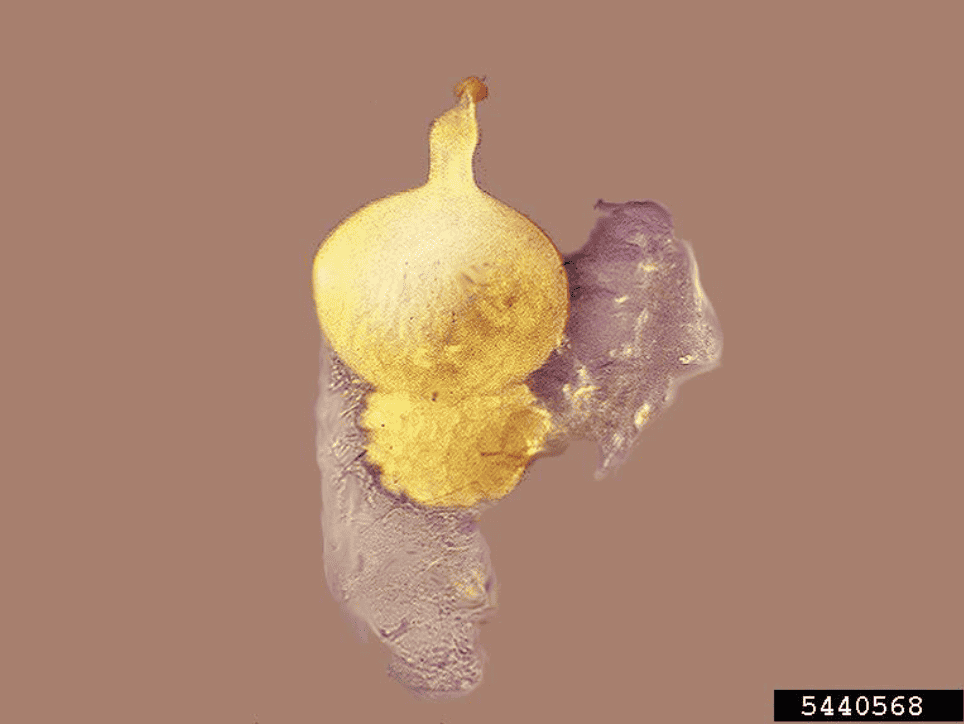
NOTES ON TAXONOMY AND BIOLOGY
Female M. exigua have a roughly rounded cuticular perineal pattern with flattened dorsal arch and widely spaced coarse striae. This root-knot nematode has sedentary endoparasitic habits. Second-stage juveniles (J2) in the soil penetrate host roots where they establish a specialized feeding site (giant cells) in the stele. As J2 develop, they cause small and rounded apical root swellings and become swollen females. Gravid females produce egg masses protruding from the root surface.
GEOGRAPHICAL DISTRIBUTION
This species has a wide geographical distribution. It has been reported in Bolivia, Brazil, Colombia, Costa Rica, Dominican Republic, El Salvador, French Guiana, French West Indies, Guatemala, Honduras, India, Peru, Suriname, Trinidad and Tobago, and Venezuela.
HOSTS
Amaranthus (Amaranthus deflexus), banana (Musa sp.), black nightshade (Solanum nigrum), blue dawn flower (Ipomea acuminata and I. aristolochiaefolia) coffee (Coffea arabica, C. eugenoides, and Coffea sp.), Commelina diffusa, cucumber (Cucumis sativus), dundellion (Taracaxum sp.), Hydrocotyle sp., Inga sp., Leonorus sibiricus, nutsedge (Cyperus rotundus), onion (Allium cepa), pepper (Capsicum annuuum), Pilea sp. rice (Oryza sativa), Spanish needle (Bidens pilosa), sourge (Euphorbia heterophylla), stagger weed (Stachys arvensis), sugarcane (Saccharum officinarum), tomato (Lycopersicon esculentum), tree tomato (Cyphomandra betacea), and watermelon (Citrullus lanatus). Reports of nematode infection on citrus and citrus relatives have not been confirmed.
CROP LOSSES
Decline and dieback of coffee trees and yield suppression up to 50% are associated with nematode infection in Brazil and South America.
